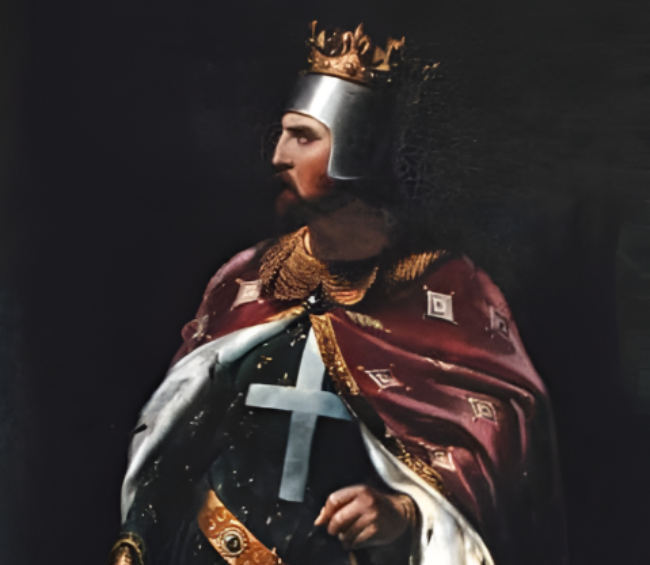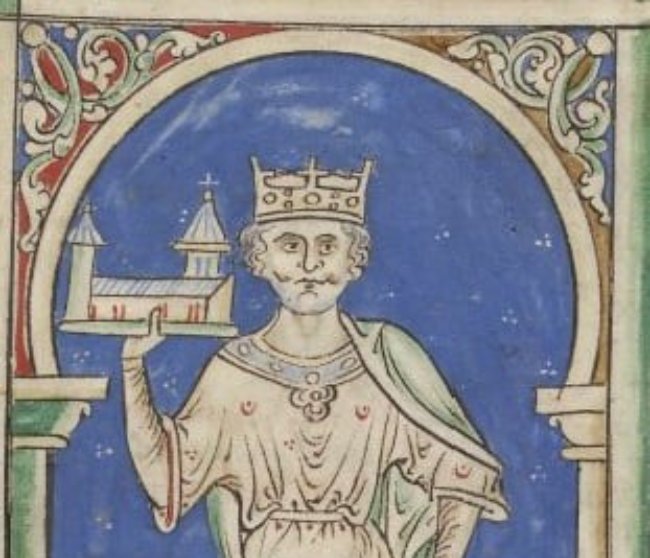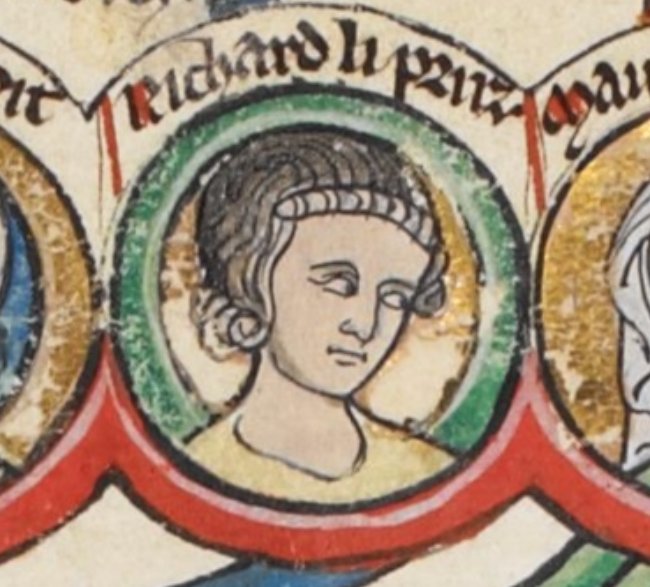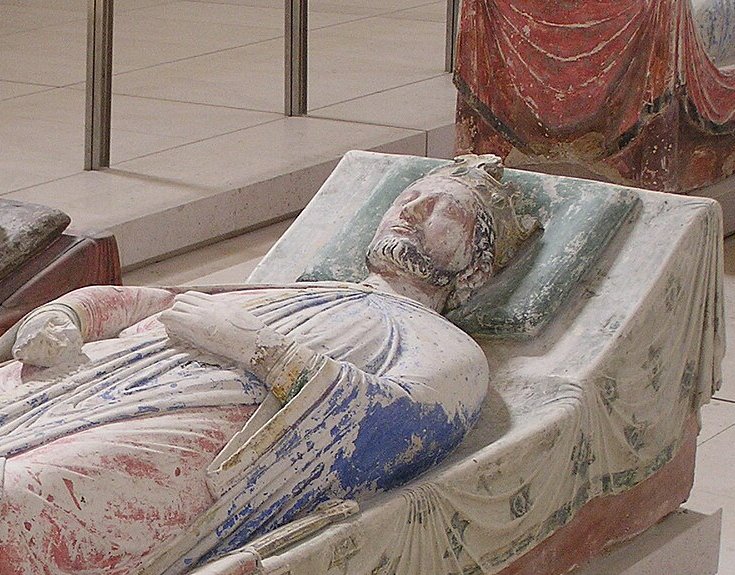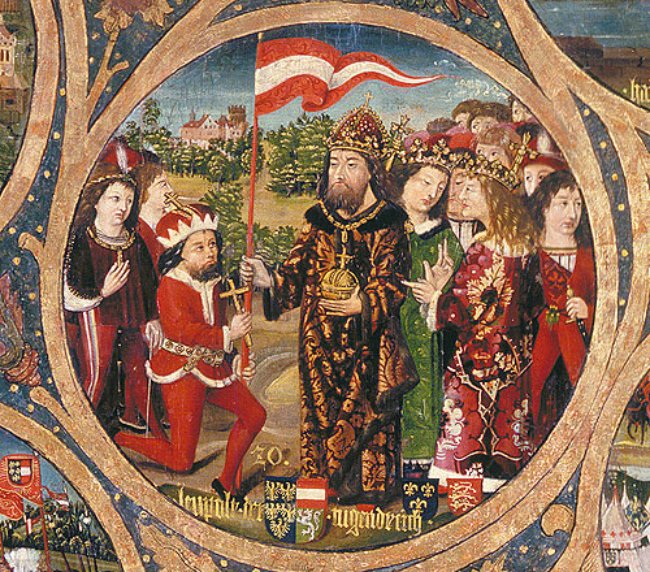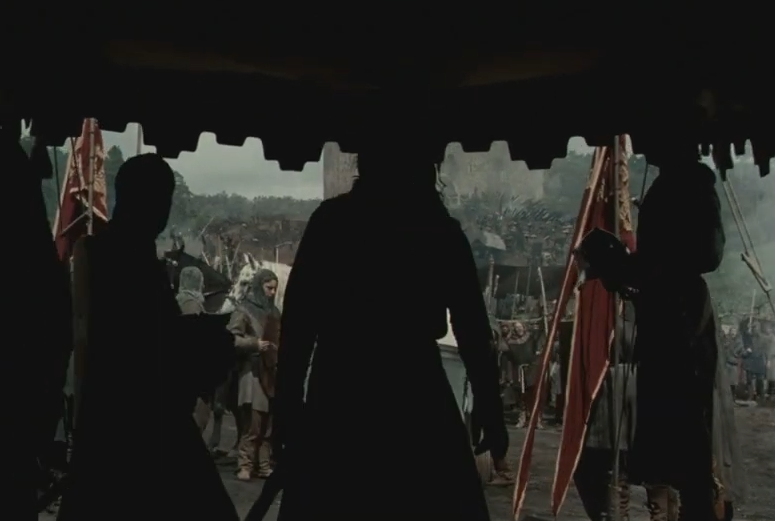The Extraordinary Life Of Richard The Lionheart
Historians describe Richard the Lionheart as “a bad son, a bad husband, and a bad king, but a gallant and splendid soldier”. The reality, however, is a little more complicated.

1. He Was The Crusader King
Richard the Lionheart was King of England from 1189 to 1199. He was famous, even in his own time, for leading the Third Crusade to retake Jerusalem. But his road to salvation was long—and brutal. Along with his brothers, he led a rebellion against his father, composed poems while being held captive, and built a castle in a “rain of blood”.
So, who was this Crusader King really?
2. He Was The Runt Of The Litter
Richard I, the legendary “Lionheart," was the runt of his parents’ litter. He entered the world on September 8, 1157, likely at Beaumont Palace in Oxford, England. He was the third son of King Henry II of England and the formidable Eleanor of Aquitaine. His elder brother, William, passed before his birth, bringing him one step closer to the throne... and all of the trouble that came with it.
 Unknown Artist, Wikimedia Commons
Unknown Artist, Wikimedia Commons
3. He Was His Mother’s Favorite
Considering his position in the family's hierarchy, Richard didn't seem to have a shoo-in for the throne at all. Even so, Richard was his mother Eleanor’s undeniable favorite, placing both of them in Henry II’s and Henry the Young King’s crosshairs. But Richard was born for greatness—and he had the lineage of conquerors to prove it.
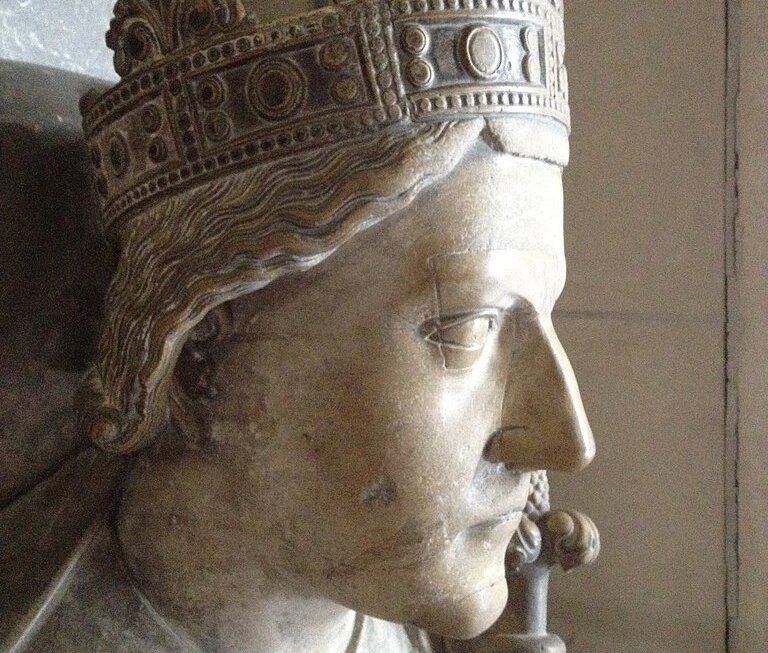 Giogo, CC BY-SA 3.0, Wikimedia Commons
Giogo, CC BY-SA 3.0, Wikimedia Commons
4. He Was Descended From William The Conqueror
Richard’s lineage was nothing short of legendary. On his father’s side, he was a descendant of William the Conqueror, while his mother’s bloodline connected him to the Anglo-Saxon kings and Alfred the Great. According to medieval chroniclers, the family tree even claimed mythical roots, stretching all the way to Noah and Woden.
However, not all of his ancestors were heroes.
5. He Might Have Had Demon Blood
If Richard’s noble ancestry wasn’t mythical enough, the Plantagenet/Angevin family lore added a sinister twist. They claimed descent from Melusine, a fairy—or perhaps a demon witch—known for her supernatural abilities and cursed lineage. Richard, himself, once said, “From the Devil we sprang, and to the Devil we shall return,” referring to his family.
Thankfully, he had a softer side.
6. He Was A Poet At Heart
Historians don’t know much about Richard’s education except for one thing: This king had a creative streak. Though born in Oxford and raised in England until age eight, his heart (and pen) belonged to the French language. Richard composed poetry in Limousin and French, proving that even warrior kings have a softer side.
Plus, it sounds like he was very charming.
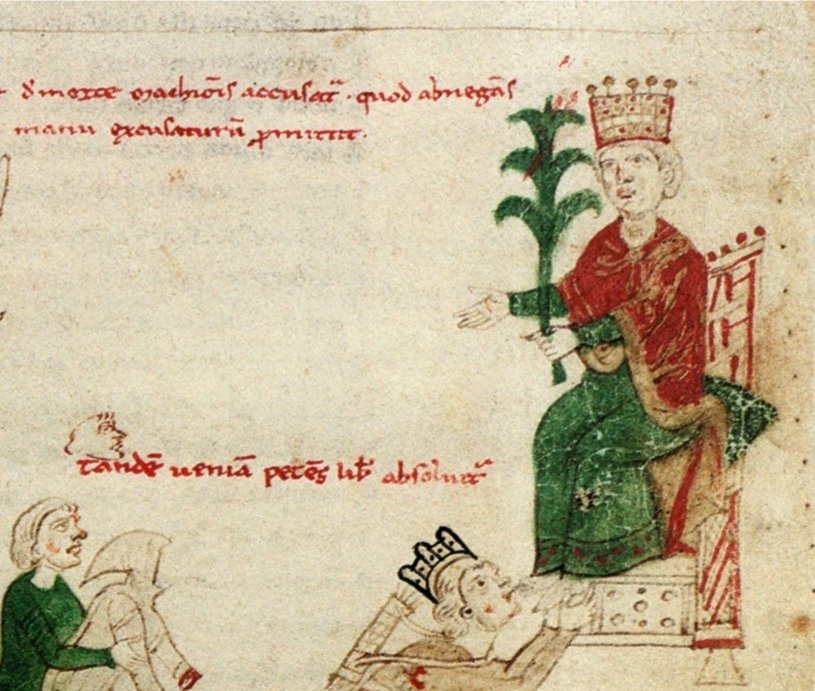 Petrus de Ebulo, Wikimedia Commons
Petrus de Ebulo, Wikimedia Commons
7. He Was A Medieval Heartthrob
According to his contemporaries, Richard was the full medieval package: tall, fair, and handsome. (Complete with lance and sword, of course). His hair shimmered somewhere between red and blonde, his eyes were light, and his complexion was pale. Whether leading troops or composing poetry, he clearly knew how to leave an impression.
You really couldn’t miss him in a crowd.
8. He Towered Over Others
Even among kings, Richard the Lionheart was a giant—literally. Though unverifiable, some accounts claim he stood at a staggering six feet and five inches tall, towering over his youngest brother, John, who was a whole foot shorter than he was. If true, his imposing height certainly contributed to his fearsome battlefield reputation.
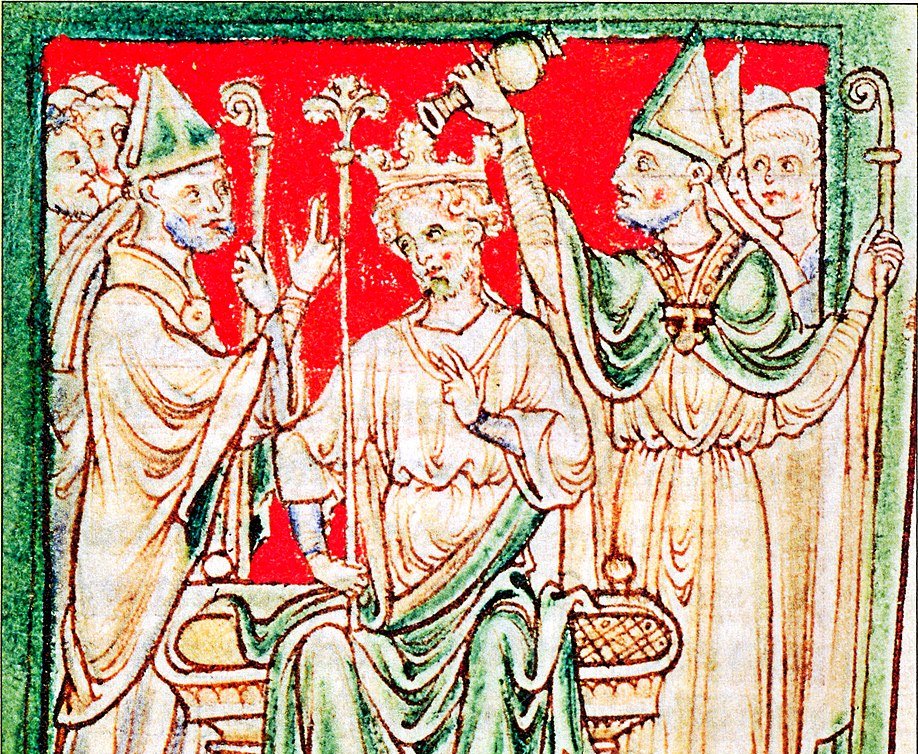 Matthew Paris, Wikimedia Commons
Matthew Paris, Wikimedia Commons

History's most fascinating stories and darkest secrets, delivered to your inbox daily.
9. He Was Born To Fight
The Itinerarium peregrinorum et gesta regis Ricardi, a detailed account of Richard’s exploits during the Third Crusade, painted a striking portrait of the Crusader King. The text describes him as tall and graceful, with limbs made for battle. His strong arms wielded swords with ease, and his powerful legs carried him straight into the fray.
He changed the image of kings forever.
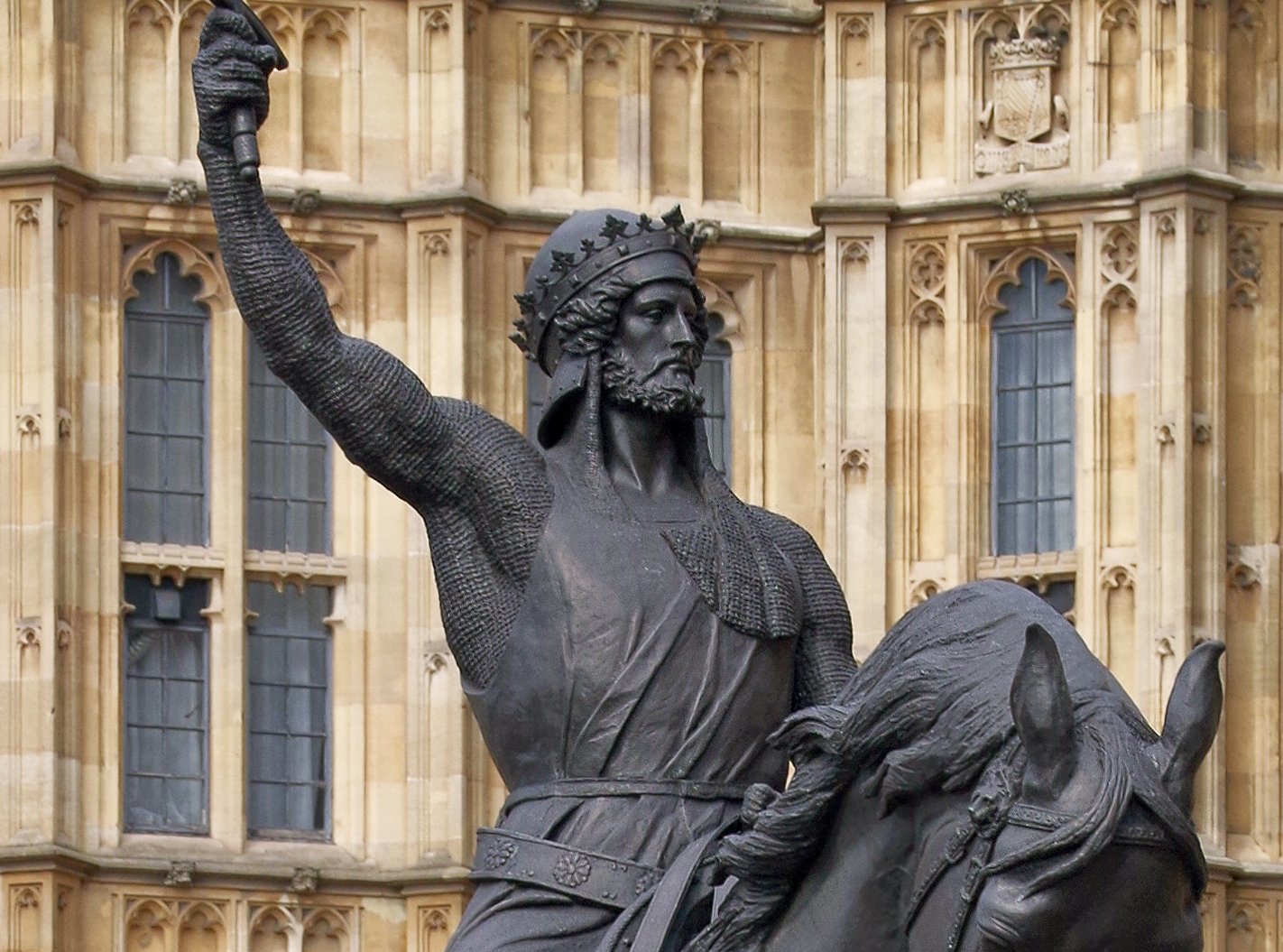 Mattbuck, CC BY-SA 4.0, Wikimedia Commons
Mattbuck, CC BY-SA 4.0, Wikimedia Commons
10. He Was A Knight-King
Contemporaries saw Richard as the ideal medieval monarch; a kind of knight-king who was courageous and generous, but also fearsome as a warrior. His martial prowess would become the stuff of legend. But he was no saint. His enemies (and sometimes his allies) accused him of greed, pride, lust, and an appetite for brutality that rivaled his thirst for victory.
![]() WIkimedia Commons, CC0, Rawpixel
WIkimedia Commons, CC0, Rawpixel
11. He Was Promised A French Princess
Early in Richard’s life, his father made plans for him to marry Alys, Countess of the Vexin, the daughter of Louis VII of France. This was more than a romantic arrangement—it was a political strategy to secure peace between England and France. In 1169, the two kings finally agreed to the betrothal. But the young Richard didn’t care for Alys—or peace.
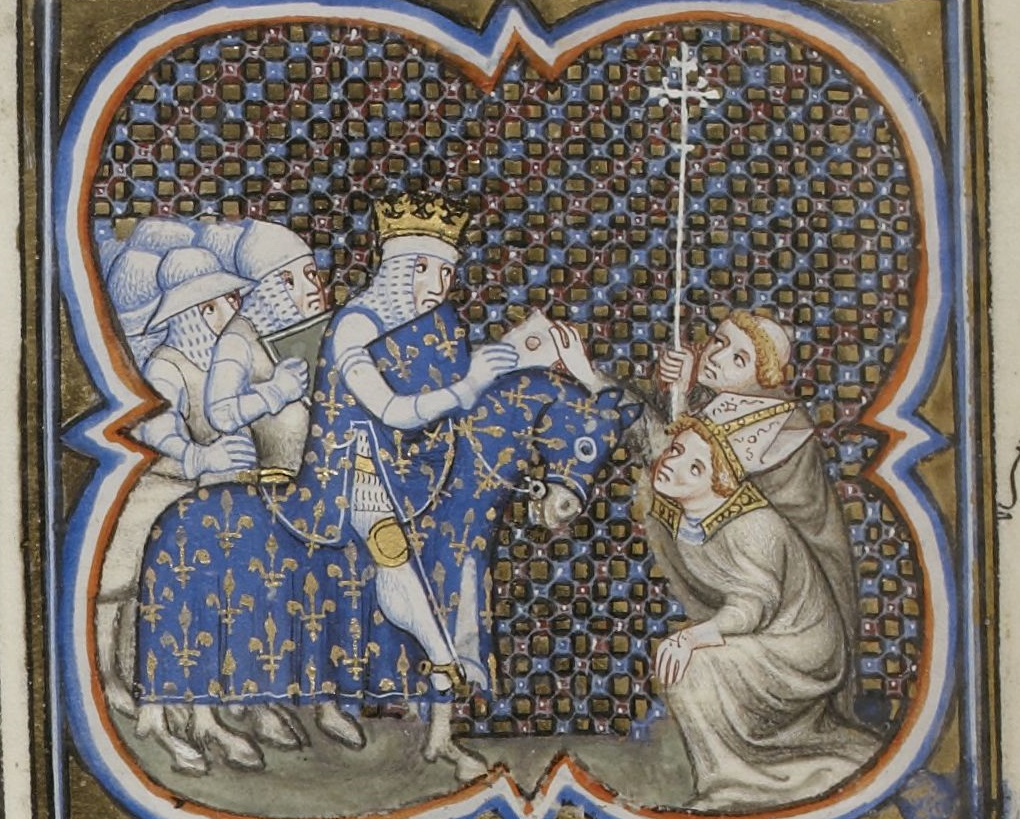 Unknown Artist, Wikimedia Commons
Unknown Artist, Wikimedia Commons
12. He Revolted Against His Father
By 1173, Richard and his brothers had grown tired of waiting for their father to abdicate the throne. So, they decided to take it from him. After rallying his local supporters, Richard boldly marched on the city of La Rochelle before retreating to Saintes. There, he fortified his defenses and waited for his father’s inevitable counterattack.
 Unknown Artist, Wikimedia Commons
Unknown Artist, Wikimedia Commons
13. He Escaped By The Skin Of His Teeth
Richard wasn’t the Lionheart quite yet—compared to his father, he was just a whiny little cub. Henry II’s forces attacked Saintes and enjoyed unbelievable success, managing to capture most of Richard’s garrison. But the cub-hearted lion managed to slink away with a handful of his most loyal fighters, and hunkered down for the remainder of the conflict.
His other brothers didn’t fare so well either.
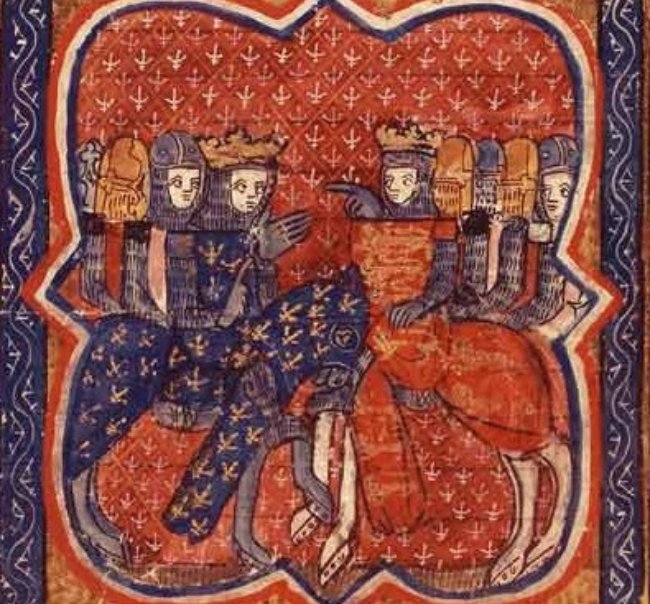 Unknown Artist, Wikimedia Commons
Unknown Artist, Wikimedia Commons
14. He Wept For Forgiveness
By September 1174, Richard found himself totally alone and excluded from a truce between Henry II and Louis VII. Out of options, he traveled (tail between his legs) to his father’s court in Poitiers and begged for forgiveness. The young Lionheart fell to his knees in tears before his father. Surprisingly, Henry II took pity on his son and granted Richard the kiss of peace.
But their fragile truce wouldn’t last long.
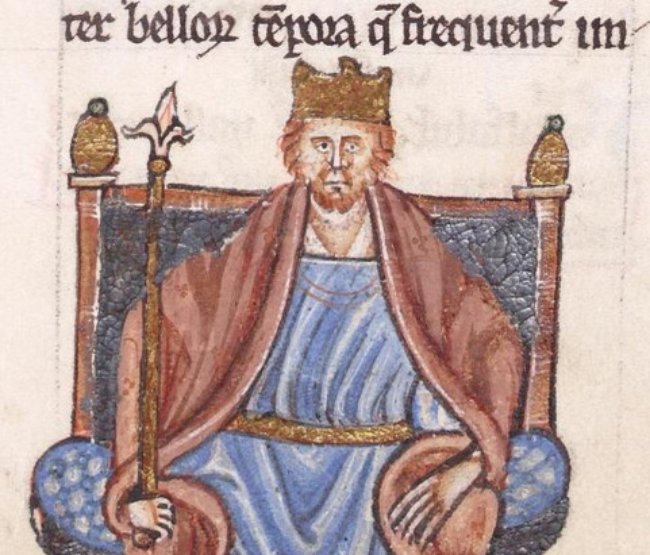 Gerald of Wales, Wikimedia Commons
Gerald of Wales, Wikimedia Commons
15. His Father Exacted Revenge
Henry II didn’t exactly let Richard get off Scot-Free. After making peace, rumors began circulating that Henry II had taken Richard’s betrothed, Alys of France, as his mistress. The scandal made the marriage impossible under Church law, but Henry clung to the dowry that came with her hand: the valuable Vexin territory.
Caught between scandal and strategy, Richard bided his time.
 Twentieth Century, Kingdom of Heaven (2005)
Twentieth Century, Kingdom of Heaven (2005)
16. He Earned His Fearsome Name
In 1175, as further punishment for his revolt, Henry II sent Richard to Aquitaine to punish the very barons who had once supported him during his rebellion. But the plan backfired on Henry II. It was during that brutal campaign that Richard earned the respect of the barons and gained the moniker “the Lionheart”.
The next time he faced his father, he wouldn’t be a cub.
 Claang Entertainment, Richard the Lionheart: Rebellion (2015)
Claang Entertainment, Richard the Lionheart: Rebellion (2015)
17. He Defied His Father Again
As far as Richard was concerned, he still had a score to settle with his father. So, when the king ordered Richard to pay homage to his elder brother, Henry the Young King, Richard flat-out refused. After all, his father had already taken his wife-to-be and turned her into his mistress. The stage was set for another family feud.
 Claang Entertainment, Richard the Lionheart: Rebellion (2015)
Claang Entertainment, Richard the Lionheart: Rebellion (2015)
18. He Beat Back His Brothers
In 1183, Henry the Young King and Geoffrey, Duke of Brittany, invaded Aquitaine, hoping to crush Richard once and for all. Many of Richard’s barons betrayed him, joining the invading forces. But Richard’s battlefield prowess prevailed. After fending off the attack, Richard ordered the execution of the prisoners he had taken as a warning to his deceitful brother.
Fate, as it turns out, was also on his side.
 Claang Entertainment, Richard the Lionheart: Rebellion (2015)
Claang Entertainment, Richard the Lionheart: Rebellion (2015)
19. He Became The Heir
In June 1183, fate handed Richard something he never expected to have: the throne. Or just about. His older brother, Henry the Young King, passed unexpectedly, making Richard the eldest surviving son of Henry II and heir to the English throne. But his newfound status did nothing to ease tensions within the royal family.
In fact, it made things worse.
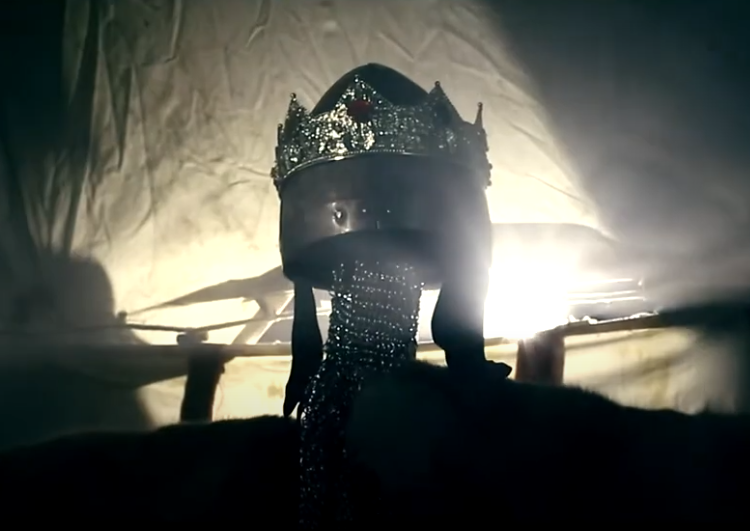 Claang Entertainment, Richard the Lionheart: Rebellion (2015)
Claang Entertainment, Richard the Lionheart: Rebellion (2015)
20. He Refused To Back Down
Henry II tried to knock Richard down a peg by demanding that he give up Aquitaine in favor of his youngest brother, John. Naturally, however, Richard flatly refused, enraging his aging father. Still, Henry II tried one last ploy: Queen Eleanor. He sent Richard’s mother to Aquitaine to convince the Lionheart to give up the lands to her.
But Richard believed it was time for a new generation of leadership.
 Claang Entertainment, Richard the Lionheart: Rebellion (2015)
Claang Entertainment, Richard the Lionheart: Rebellion (2015)
21. He Teamed Up With A Young King
By 1187, Richard had grown tired of living in his father’s shadow. So, the clever Lionheart formed a strategic alliance with Philip II of France, the 22-year-old son of Eleanor’s ex-husband, and Henry II’s old enemy, Louis VII. The partnership strengthened Richard’s position against his father, but he might have had ulterior motives—romantic ones.
 Claang Entertainment, Richard the Lionheart: Rebellion (2015)
Claang Entertainment, Richard the Lionheart: Rebellion (2015)
22. He Shared A Bed With His Ally
The political bond between Richard and Philip sparked rumors that their relationship might have been more than just strategic. One chronicler noted that, as a gesture of unity, the two kings shared a bed. However, historians like John Gillingham dismissed the idea of romance, suggesting it was more of a medieval version of a photo-op to show cooperation.
 Claang Entertainment, Richard the Lionheart: Rebellion (2015)
Claang Entertainment, Richard the Lionheart: Rebellion (2015)
23. His Heart Wasn’t In It
The “bed-sharing” between Richard and Philip lies at the center of an age-old debate over the true desires of the Lionheart’s heart. According to Gillingham, the bed-sharing was purely symbolic—a platonic act to represent the allegiance between England and France. Regardless of the nature of their relationship, however, Richard and Philip were about to shake things up.
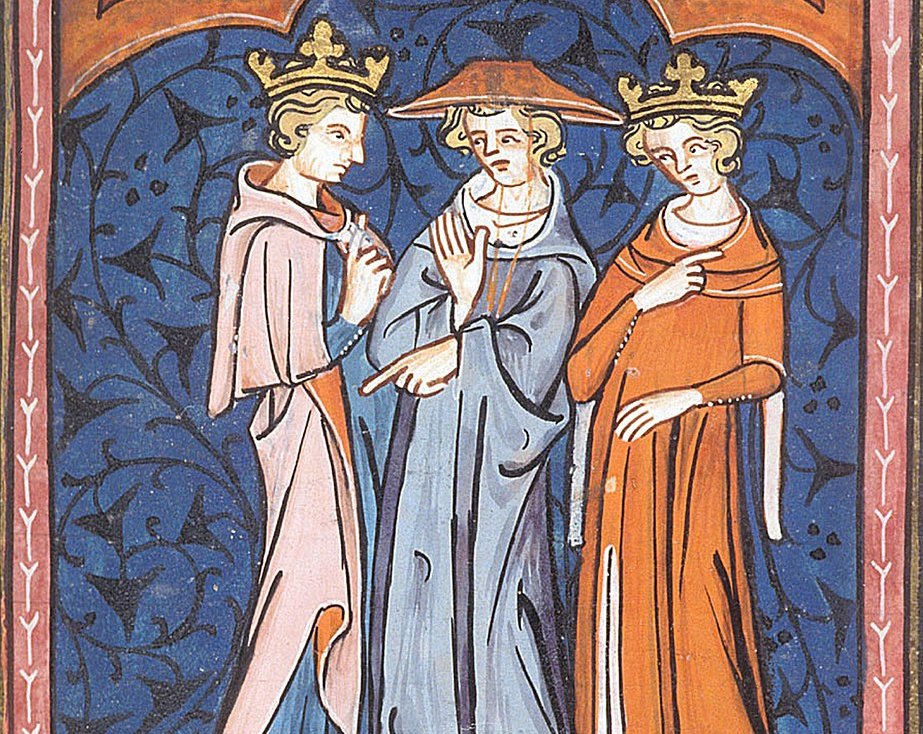 Levan Ramishvili, Wikimedia Commons
Levan Ramishvili, Wikimedia Commons
24. He Seized The Crown
On July 4, 1189, Richard put his allegiance with Philip to work. Joining forces with the French, Richard marched against his father at Ballans—and won! Clearly, Richard’s victory was too much for his aging father. Two days later, Henry II kicked the bucket and Richard ascended to the throne as King of England, Duke of Normandy, and Count of Anjou.
The Lionheart’s reign had officially begun—but not without scandal.
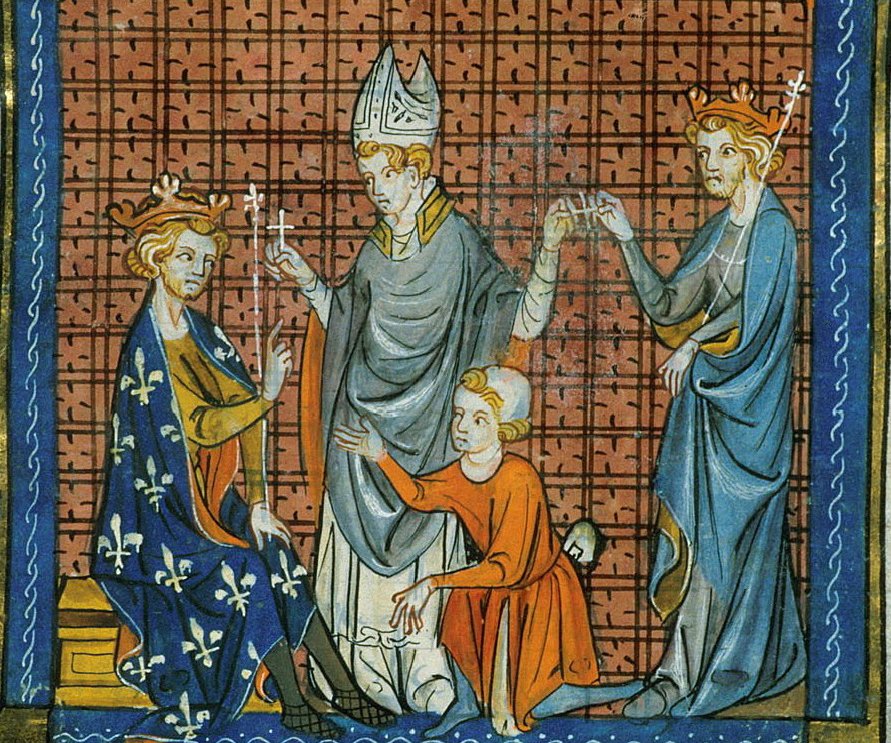 Rolling Bone, Wikimedia Commons
Rolling Bone, Wikimedia Commons
25. He Was Blamed For His Father’s Death
According to the chronicler Roger of Howden, the animosity between Richard and his father extended beyond the battlefield and into the hereafter. Legend has it that Henry II’s corpse bled from the nose when Richard approached. Superstitious people took it as a clear sign that Richard had somehow caused his own father’s demise.
While this claim added a dark cloud to his ascension, it didn’t stop Richard from claiming what was his. And then selling it.
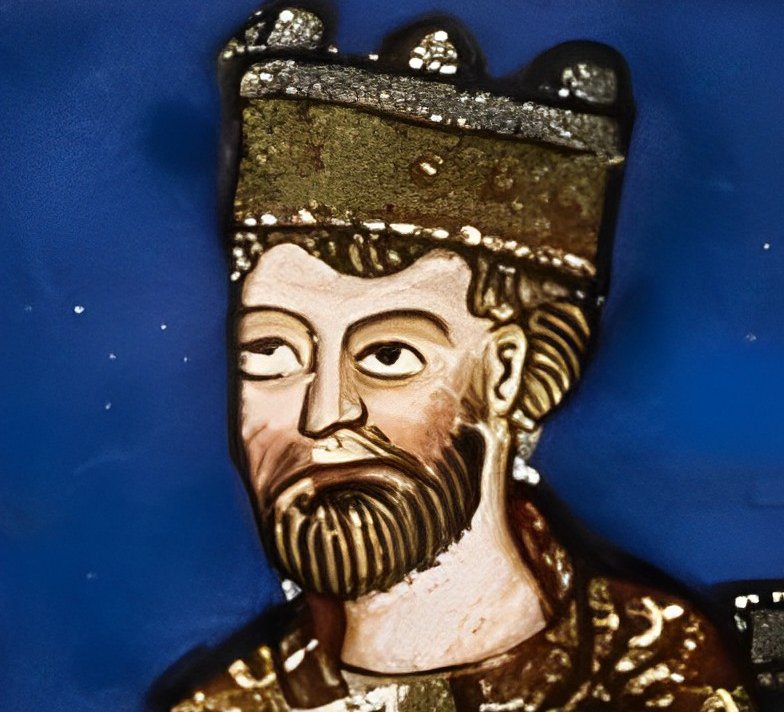 Unknown Artist, Wikimedia Commons
Unknown Artist, Wikimedia Commons
26. He Nearly Sold The City Of London
Richard wasted no time preparing for his life’s ambition: launching the Third Crusade. The only problem was that the crown was basically broke. So, Richard held a garage sale, selling everything he could get his hands on. Allegedly, he was so strapped for cash that he once declared, “I would have sold London if I could find a buyer”.
Richard’s strategy worked, however, and he raised enough money to launch a crusade to retake Jerusalem from Saladin.
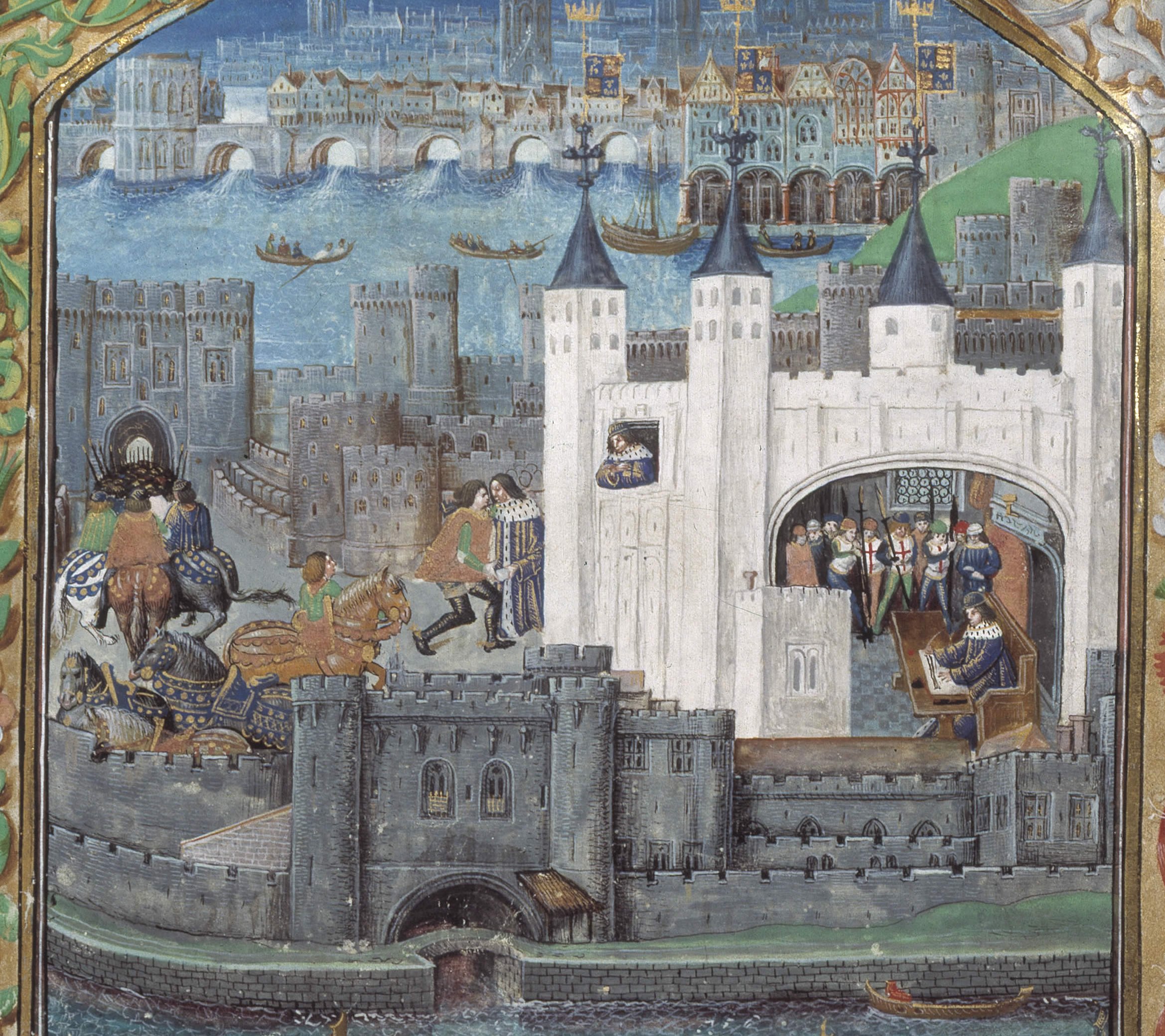 Unknown Artisti, Wikimedia Commons
Unknown Artisti, Wikimedia Commons
27. He Got Married On The Road
As a true crusader, Richard tied the knot before leaving for the Holy Land. But, with his father six feet under, he was free to marry whomever he wanted—and he didn’t want his father’s mistress. Instead, for strategic reasons, he married Berengaria of Navarre, the eldest daughter of King Sancho VI. The two had met years earlier at a tournament in her native Navarre.
They didn’t exactly embark on a honeymoon.
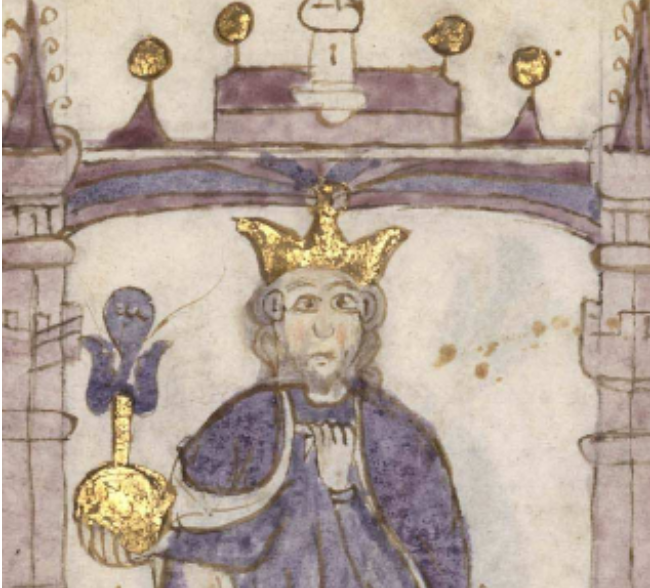 Unknown Artist, Wikimedia Commons
Unknown Artist, Wikimedia Commons
28. He Took His Wife Into Battle
Richard’s idea of a honeymoon was decidedly not romantic. After their nuptials, instead of enjoying some time along the Mediterranean coast, the Lionheart took Berengaria to the Holy Land with him. Not surprisingly, the new Queen of England was not impressed with the lack of a honeymoon suite and left Richard to make her way back on her own.
From the sounds of it, she missed quite the show.
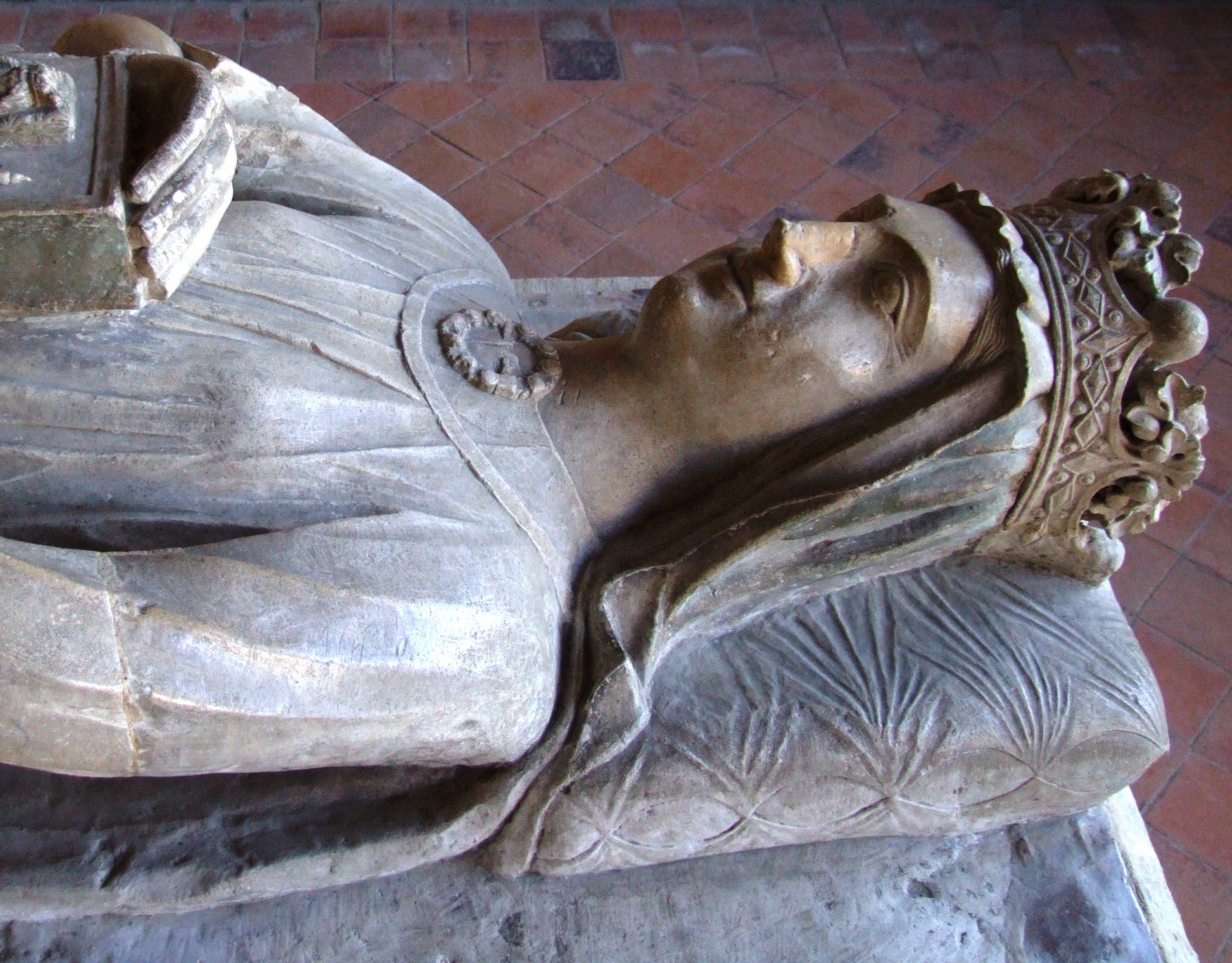 MOSSOT, CC BY-SA 3.0, Wikimedia Commons
MOSSOT, CC BY-SA 3.0, Wikimedia Commons
29. He Battled Enemies And Illness
From the moment that he entered the fray in the Holy Land, Richard’s legendary resilience was on full display. Despite suffering from a severe illness resembling scurvy, he still insisted on joining in the fighting himself. Armed with a crossbow and carried on a stretcher, Richard shot down guards along the walls of Acre.
Sadly, his heroic efforts never quite paid off.
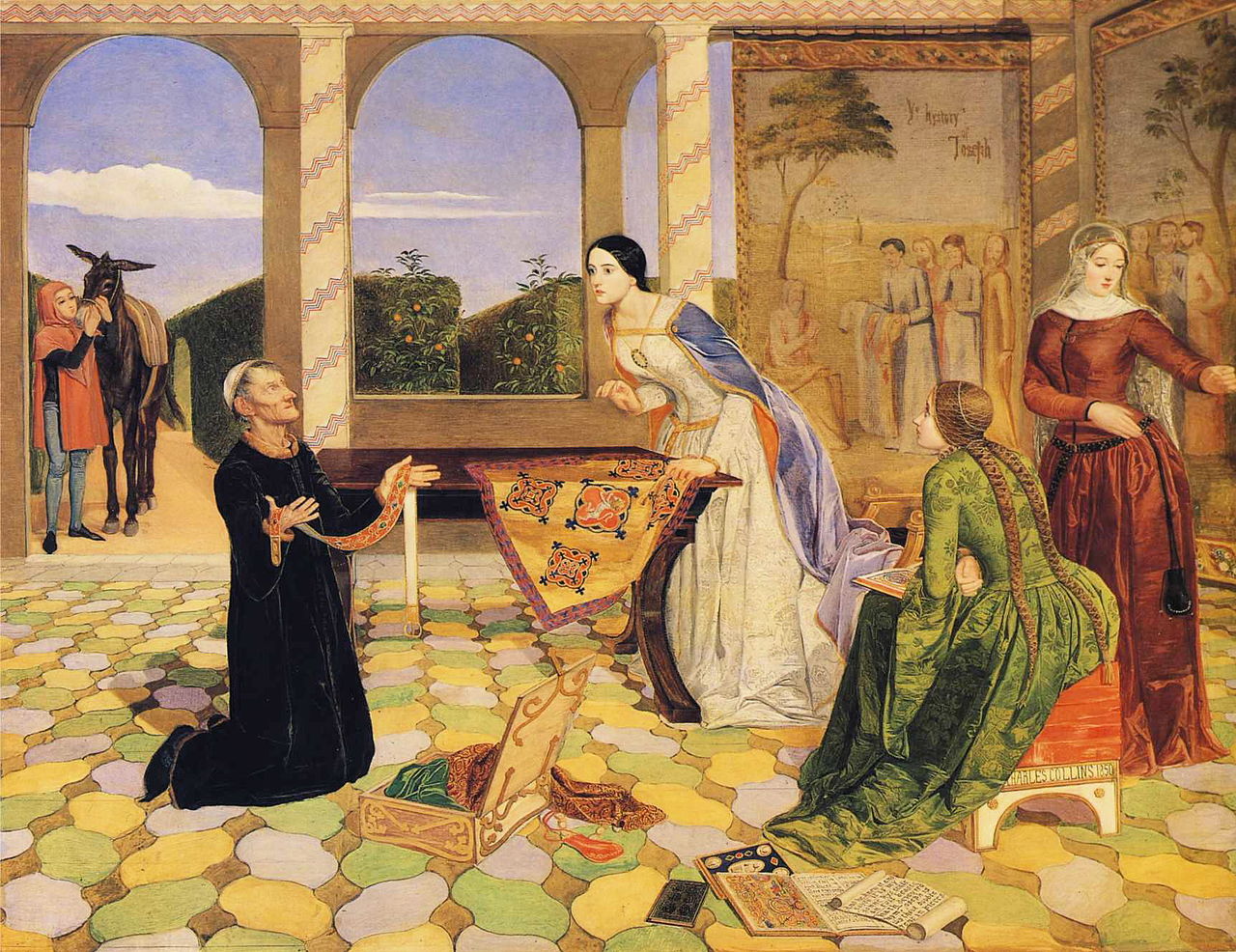 Charles Allston Collins, Wikimedia Commons
Charles Allston Collins, Wikimedia Commons
30. He Peaced Out
In-fighting between the crusaders derailed Richard’s ultimate goal of retaking Jerusalem. Worse yet, domestic threats to his homeland forced him to make peace with Saladin and set sail for home. But he had even fewer friends on the road through Eastern Europe than he did in the Holy Land, and his journey would nearly cost him his life.
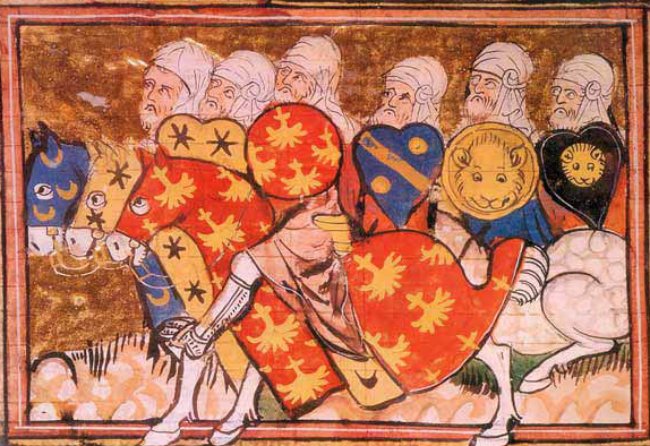 Unknown Artist, Wikimedia Commons
Unknown Artist, Wikimedia Commons
31. He Went Undercover
On his way home from the Third Crusade, Richard’s journey took a disastrous turn. A terrible storm forced his ship off-course and left him stranded near Venice. To avoid his (many) enemies in the area, he disguised himself as a Knight Templar. But his already terrible luck got even worse when Leopold of Austria captured him near Vienna and took him prisoner.
A little time with his thoughts was, apparently, exactly what he needed.
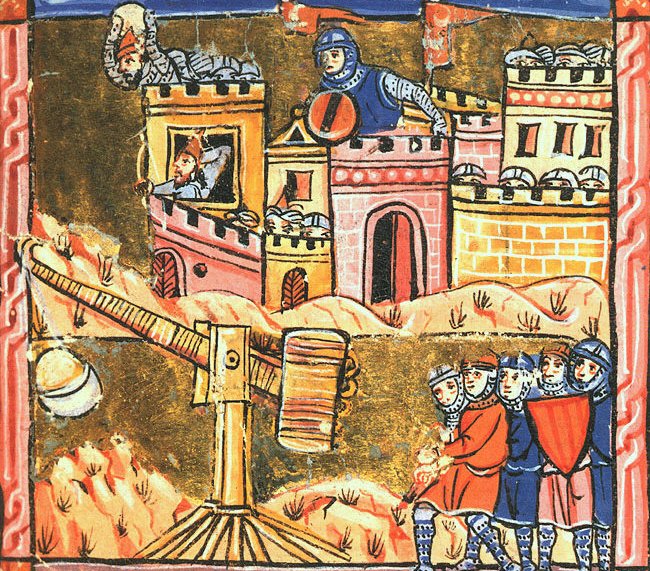 Library of Lyon, Wikimedia Commons
Library of Lyon, Wikimedia Commons
32. He Wrote Music In Captivity
Leopold kept Richard prisoner in Dürnstein Castle, and Richard took comfort in the one thing he still had: his creative spirit. While captive, he penned Ja nus hons pris, a poignant lament expressing his feelings of abandonment. Addressed to his half-sister Marie, the song became a testament to Richard’s creativity and resilience.
No matter how sad he was, however, he refused to bow to anyone.
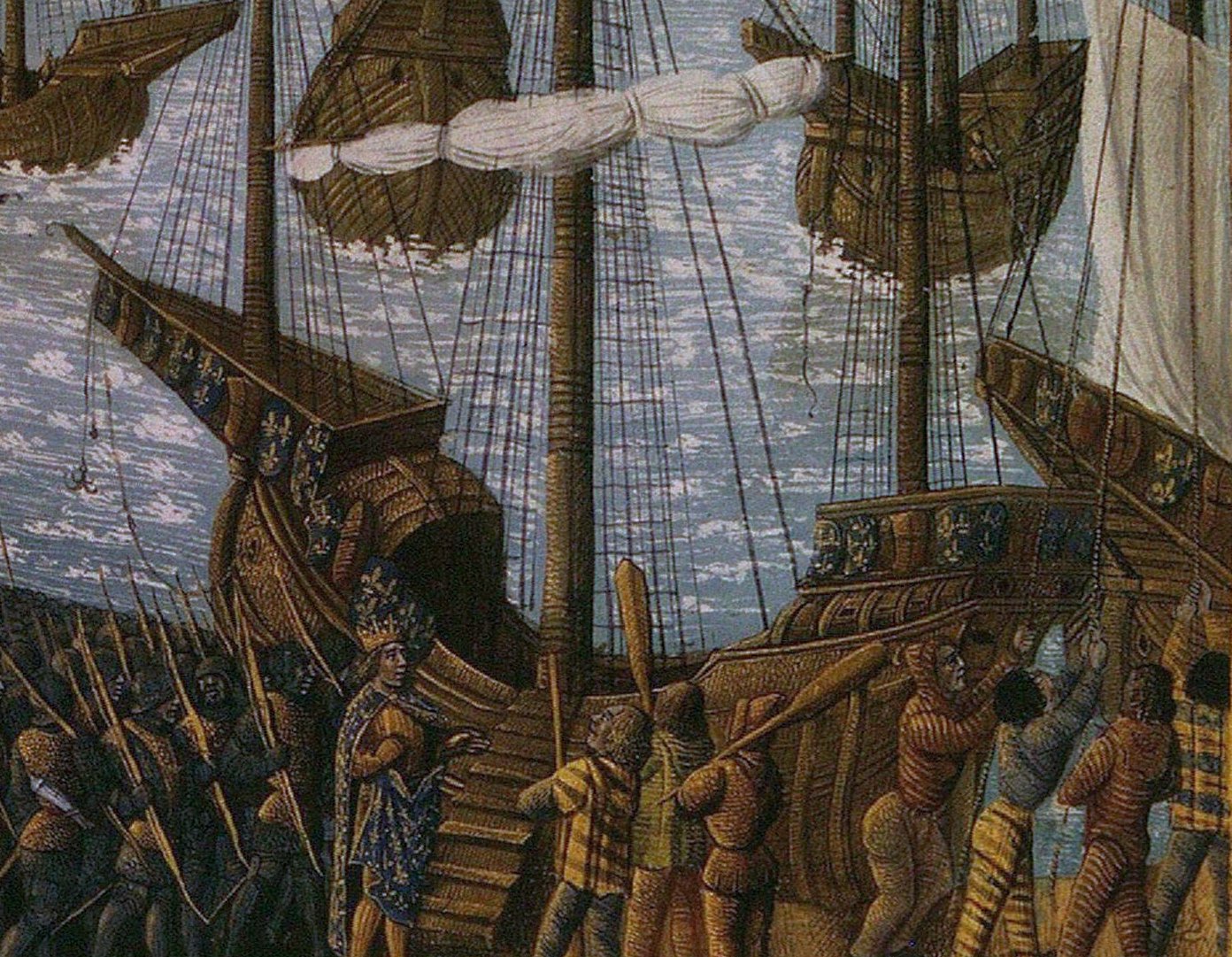 Jean Colombe, Wikimedia Commons
Jean Colombe, Wikimedia Commons
33. He Stood Up To An Emperor
On March 28, 1193, Leopold transferred Richard to Holy Roman Emperor Henry VI who had him locked up in Trifels Castle. Henry VI had grievances with Richard, including his support of rival factions in Sicily and Germany. Yet, despite his precarious situation, Richard refused to grovel, famously telling the Emperor, “I am born of a rank which recognises no superior but God”.
Still, Henry VI could make him suffer.
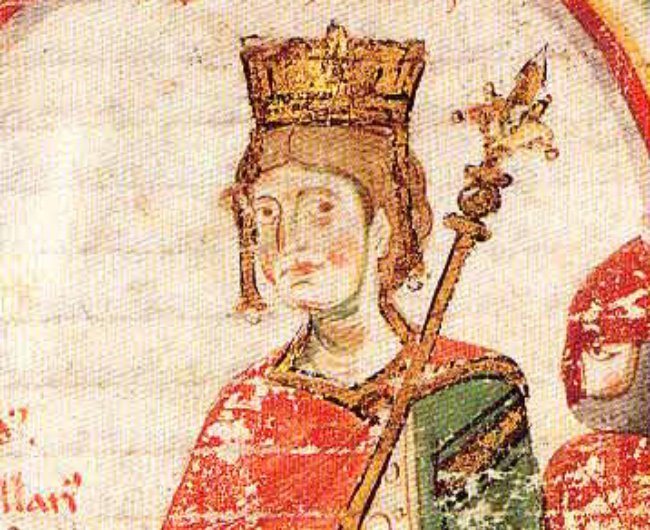 Peter of Eboli, Wikimedia Commons
Peter of Eboli, Wikimedia Commons
34. He Endured Harsh Conditions
At first, the Emperor treated Richard with some small measure of respect. But his situation deteriorated when Philip of Dreux, the Bishop of Beauvais, intervened. Beauvais had an axe to grind against the English king and convinced the Emperor to keep Richard in chains so hefty that the Lionheart complained even a horse couldn’t bear their weight.
His freedom would cost a fortune.
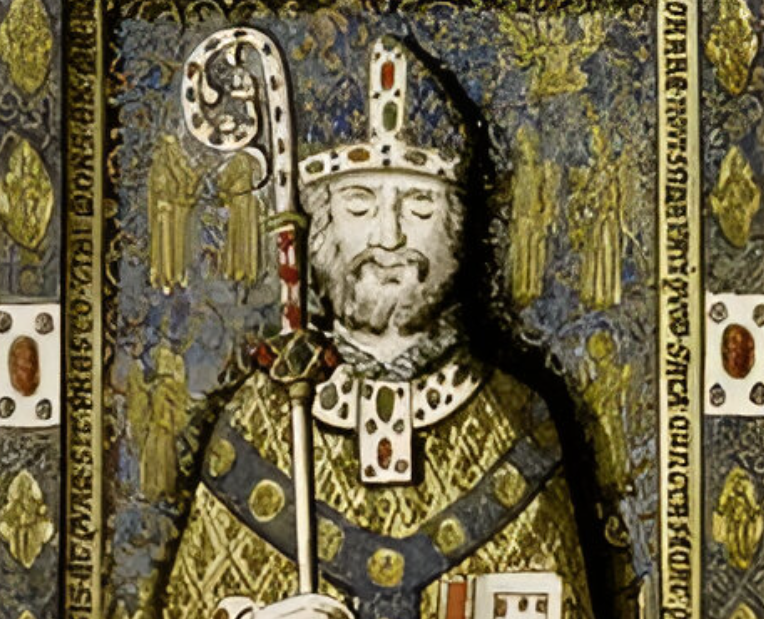 Roger de Gaigniéres, Wikimedia Commons
Roger de Gaigniéres, Wikimedia Commons
35. He Cost A King’s Ransom
The Emperor held Richard ransom for a staggering 150,000 marks—equivalent to 100,000 pounds of silver and about two to three times the English Crown’s annual income. The ransom was so monumental, even by medieval standards, that Richard’s mother, Eleanor, had to come up with some clever ways to raise the funds before it was too late.
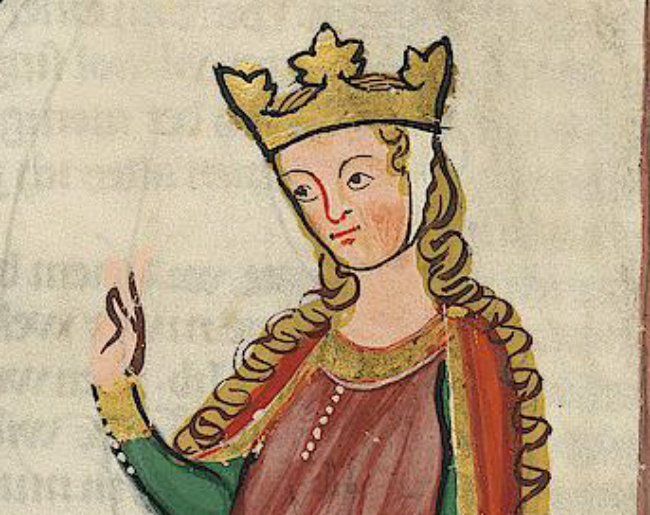 Meister des Codex Manesse, Wikimedia Commons
Meister des Codex Manesse, Wikimedia Commons
36. He Had A Fierce Fundraiser
While Richard languished in captivity, his mother Eleanor of Aquitaine launched a relentless campaign to raise his ransom. She imposed taxes on clergy and commoners alike, and even went so far as to confiscate church treasures. There was also the consideration of another potential alliance—the marriage of Richard’s niece, the Fair Maid of Brittany, to Leopold of Austria’s heir—which might secure his release.
The rest of the family, however, seemed eager to keep him in chains.
37. His Brother Tried To Keep Him Locked Up
While Eleanor worked to free him, Richard’s brother John wasn’t so eager to see him return. In fact, John partnered up with King Philip of France and offered the Emperor 80,000 marks to keep Richard clamped in irons until Michaelmas 1194. Thankfully for Richard, Henry VI turned them down, leaving John’s betrayal exposed.
But Richard wasn’t out of the woods yet.
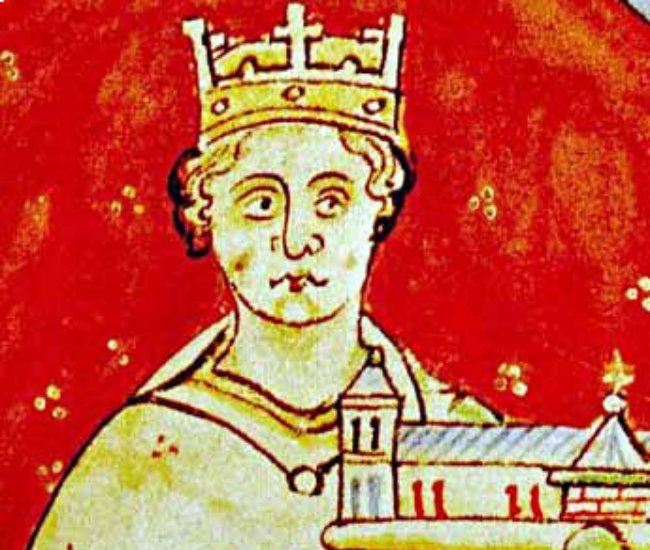 Matthew Paris, Wikimedia Commons
Matthew Paris, Wikimedia Commons
38. He Was Free At Last
Eleanor finally delivered her son’s ransom money to the Emperor’s ambassadors. But there was a catch. Transporting that much gold, silver, and precious treasure was dangerous in medieval Europe. The Emperor made the condition that, should anything happen to the ransom, Richard would be held responsible.
Thankfully, on February 4, 1194, Richard secured his release with the safe delivery of the ransom. Upon hearing the news of Richard’s release, Philip of France warned John, “Look to yourself; the devil is loose”.
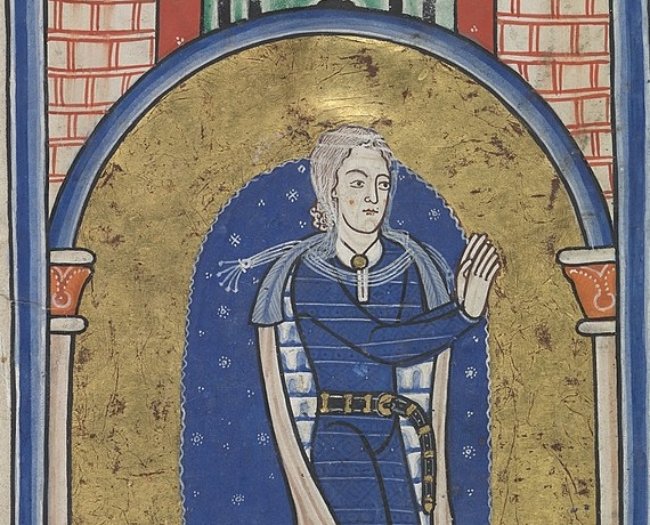 Unknown Artist, CC BY-SA 4.0, Wikimedia Commons
Unknown Artist, CC BY-SA 4.0, Wikimedia Commons
39. He Forgave A Traitor
While Richard stewed in captivity, John had rebelled and worked with Philip to claim parts of Normandy, including the Norman Vexin. With Richard’s return, however, John may have worried about his treachery and the punishment he would have to face.
Shockingly, however, upon his return, Richard forgave his brother and even named him as his heir, replacing their nephew Arthur. But he wanted everyone to remember who was really king around those parts.
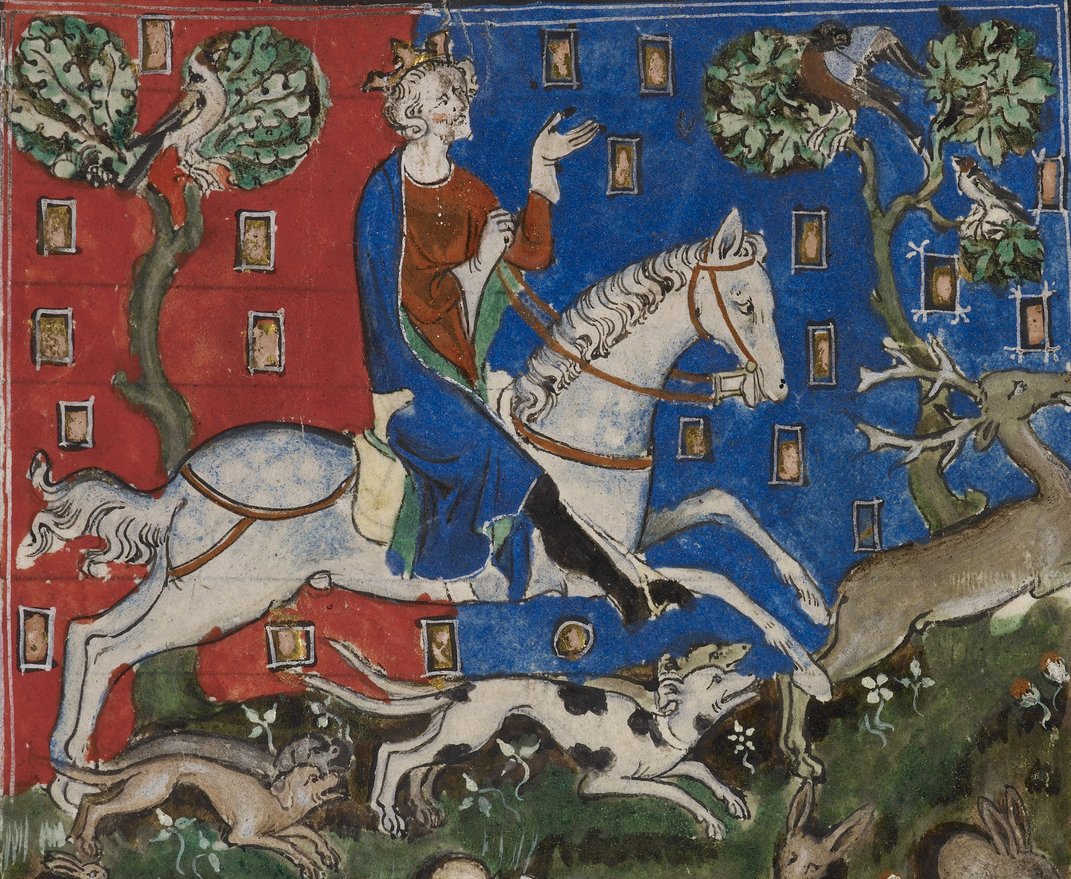 British Library, CC0, Wikimedia Commons
British Library, CC0, Wikimedia Commons
40. He Was Crowned Again
Richard’s captivity overshadowed his gallantry during the Third Crusade and left a stain on his royal image. A stain that could only come out one way. On March 11, 1194, Richard had a second coronation at Winchester to erase the shame of his imprisonment and reinforce his authority as King of England. And every king needs a castle.
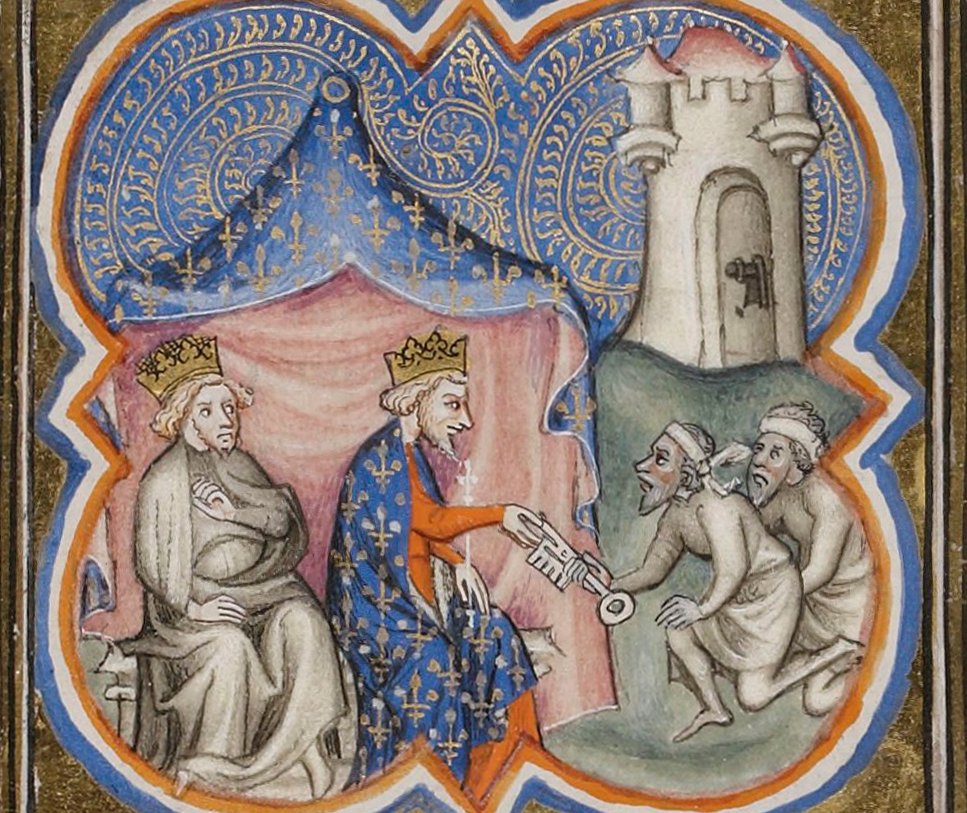 National Library of France, Wikimedia Commons
National Library of France, Wikimedia Commons
41. He Built An Expensive Fortress
Upon his return, Richard embarked on a campaign to retake his territories from his former ally, Philip of France. As part of his efforts, he poured his resources into Château Gaillard, a cutting-edge fortress in Normandy. The project cost an astronomical £15,000 to £20,000—more than double what he spent on all castles in England.
God didn’t seem pleased with his lavish spending.
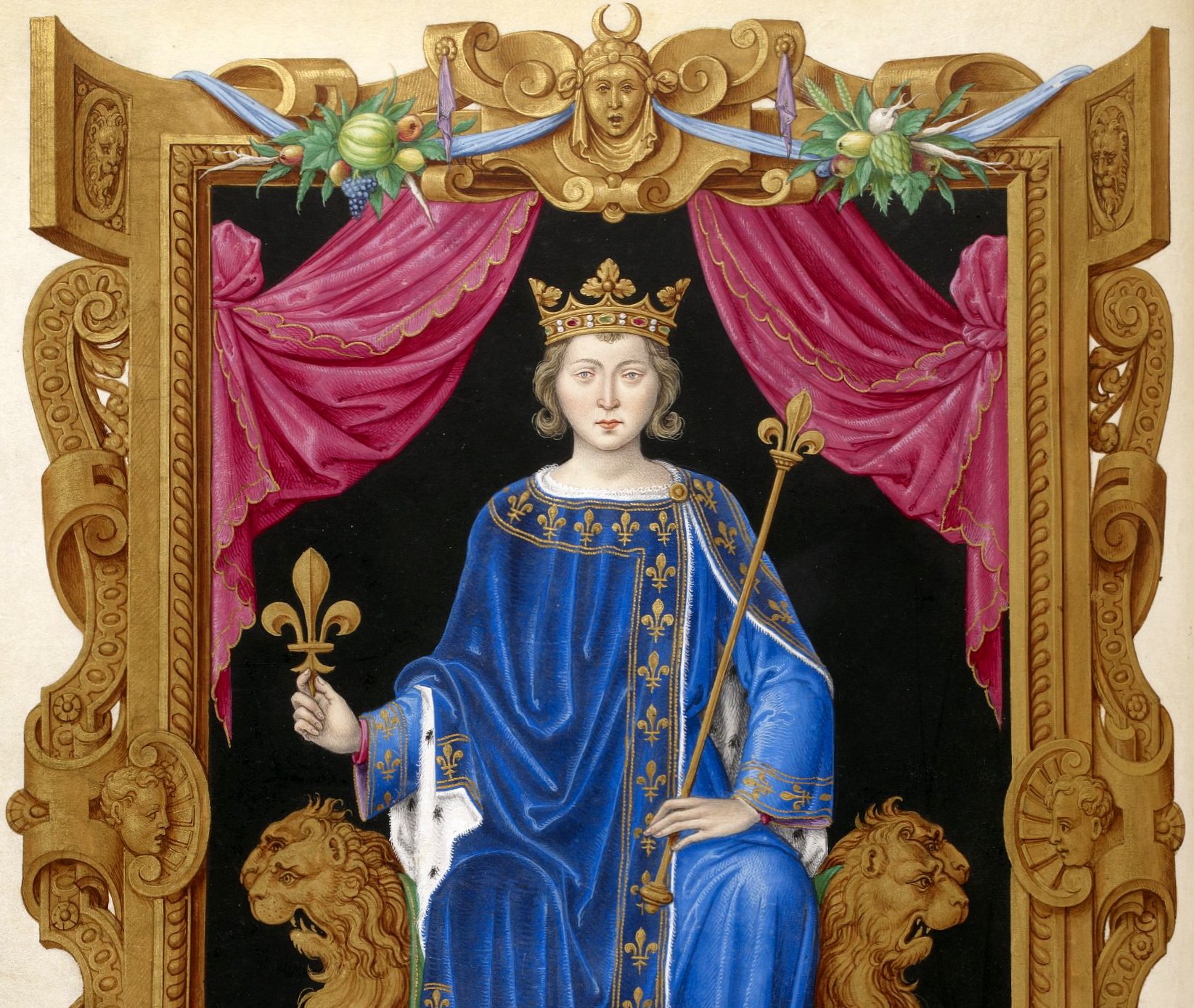 Unknown Artist, Wikimedia Commons
Unknown Artist, Wikimedia Commons
42. He Was Unfazed By A Bloody Omen
In May 1198, while overseeing construction at Château Gaillard, Richard and his workers received a terrible omen. Without explanation, a “rain of blood" came down upon them—a strange phenomenon recorded by chronicler William of Newburgh. Though some advisers saw it as a wicked omen, the Lionheart brushed it off, staying true to his fearless reputation.
Plus, for Richard, the construction of the castle was personal.
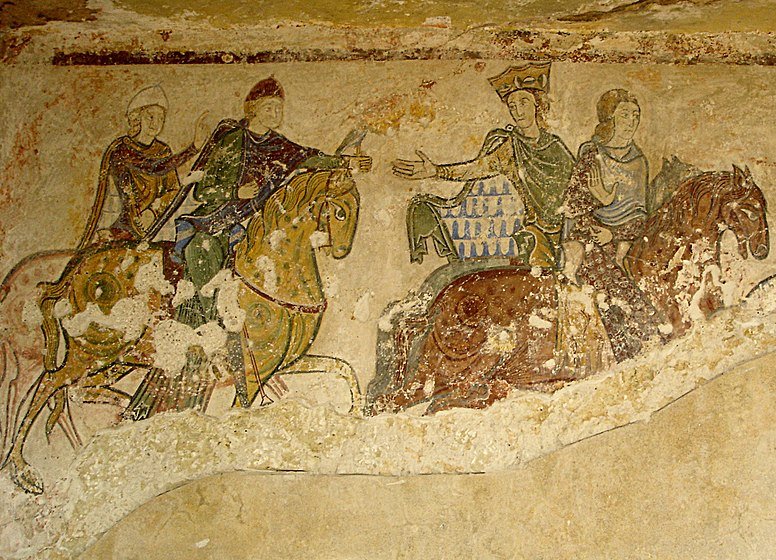 Chinpat, CC BY-SA 3.0, Wikimedia Commons
Chinpat, CC BY-SA 3.0, Wikimedia Commons
43. He Might Have Designed His Own Castle
In his later years, Richard spent much of his time at Château Gaillard, which became his favorite residence. According to historian Richard Allen Brown, Richard may have been the mastermind behind its construction, acting as the building's architect. Brown’s theory is supported by Richard’s constant presence at the site and his keen interest in its progress.
But he should have been fortifying his personal guard.
 Eugène Viollet le Duc, Wikimedia Commons
Eugène Viollet le Duc, Wikimedia Commons
44. He Took A Fatal Wound
On March 26, 1199, Richard’s legendary luck ran out. During a siege to retake some of his lands from Philip, an apparently stray crossbow bolt struck him in the shoulder. The injury quickly became gangrenous, and the Lionheart’s life hung in the balance. But even in his final hours, Richard sought to face his enemy head-on.
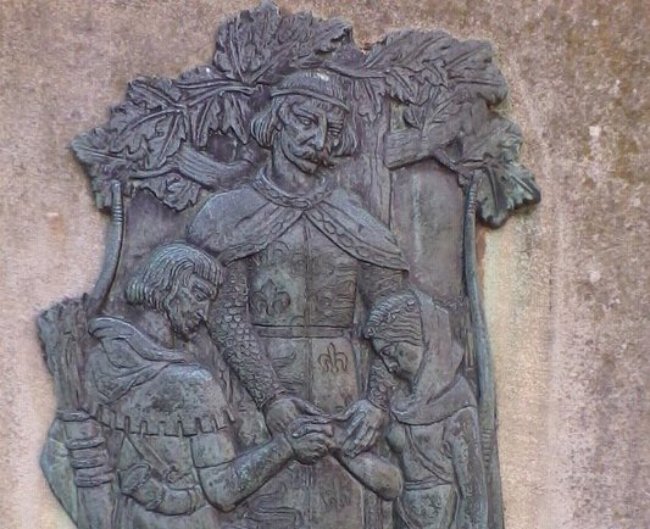 RichardUK2014, CC BY-SA 3.0, Wikimedia Commons
RichardUK2014, CC BY-SA 3.0, Wikimedia Commons
45. He Confronted His Attacker
The errant bolt turned out to, in fact, be a well-placed shot by a skilled crossbowman. Richard demanded to confront his attacker, but was shocked when he learned who it was. The expert crossbowman was no man at all but, according to most reports, a young boy. The boy confessed that he was seeking revenge against Richard for the demise of his father and brothers.
The Lionheart’s reaction was even more shocking.
46. He Showed Mercy
Despite his reputation for ruthlessness, Richard displayed a rare moment of compassion for his would-be assassin. He forgave the boy, declaring, “Live on, and by my bounty behold the light of day”. The king even ordered the boy’s release and gave him 100 shillings for his troubles. Unfortunately, God wouldn’t show Richard the same mercy.
47. He Passed In His Mother’s Arms
On April 6, 1199, Richard succumbed to his infected wound in the arms of his beloved mother, Eleanor of Aquitaine. His unexpected demise at the hands of a mere boy, however, only added to Richard’s legendary status. His poetic end inspired the phrase “the Lion by the Ant was slain”. Not everyone liked how Richard’s story ended.
48. His Mercy Was Undone
Richard’s act of forgiveness for the young boy who dealt him his fatal blow didn’t last for very long. Shortly after his body turned cold, Mercadier, a notorious mercenary captain in Richard’s employ sought his own terrible revenge: He flayed the boy alive and had him hung. It was a brutal end to a moment of chivalry, tarnishing the legacy of Richard’s final days.
And he couldn’t even rest in peace.
49. He Was Buried In Pieces
Richard’s surviving family members and nobles scattered his remains across France. They interred his heart at Rouen in Normandy, his entrails at Châlus where he drew his final breath, and laid his other remains at Fontevraud Abbey in Anjou, at the feet of his father, Henry II.
But with Richard gone, there was just one question on everyone’s minds.
50. He Left No Heirs
Richard had spent almost his entire life on the battlefield or in captivity writing poems. Suffice to say, in the midst of all that, he didn’t find a lot of time for babymaking. He passed on without having produced a legitimate heir and only acknowledged one illegitimate son, Philip of Cognac. His throne passed instead to his brother John, marking the beginning of the end of the Angevin Empire.
51. He Has A Complicated Legacy
Richard the Lionheart was a larger-than-life character whose actions prove just as divisive today as they were in his own time. Historian Steven Runciman famously remarked, "he was a bad son, a bad husband, and a bad king, but a gallant and splendid soldier". There was just one thing he still had to accomplish, even from beyond the grave.
52. He Inspired England Centuries Later
Richard’s life ambition had been to retake Jerusalem—a feat that escaped him thanks to his bickering allies. Centuries after his passing, however, Richard’s dream of reclaiming Jerusalem finally came true. When British forces captured the city under General Edmund Allenby in WWI, the newspapers ran a shocking cartoon.
This cartoon featured none other than Richard himself, gazing down from heaven. The caption alongside it read, “At last my dream has come true”.


